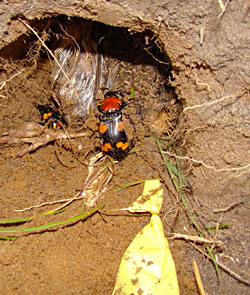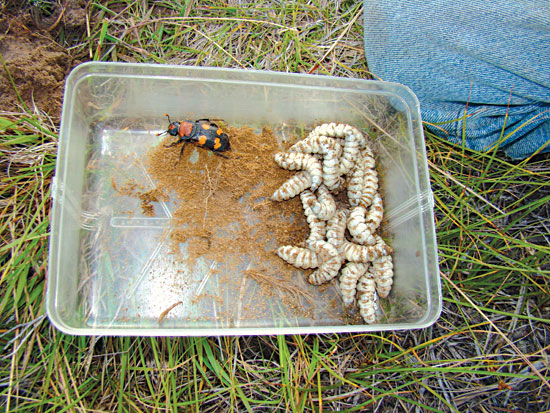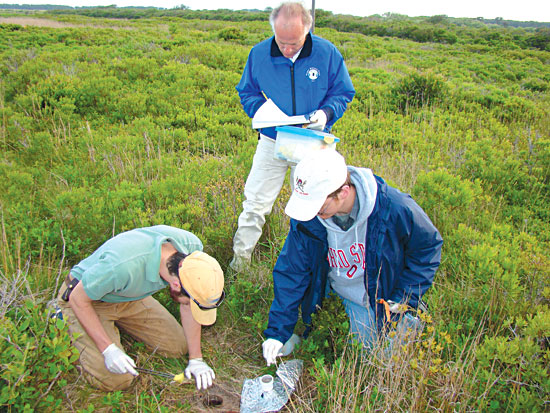Saving the Beetles
 Nantucket is the site of an exciting endangered species reintroduction and research project: one of only a few successful invertebrate reintroduction initiatives in the world. The American Burying Beetle (ABB) is one of the few insects on the Endangered Species List. It was recently given a photo spread in a National Geographic article about the world’s most endangered species.
Nantucket is the site of an exciting endangered species reintroduction and research project: one of only a few successful invertebrate reintroduction initiatives in the world. The American Burying Beetle (ABB) is one of the few insects on the Endangered Species List. It was recently given a photo spread in a National Geographic article about the world’s most endangered species.
The American Burying Beetle has an unusual life cycle that sets the species apart from most other insects. The Maria Mitchell Association is collaborating with the Roger Williams Park Zoo and the U.S. Fish and Wildlife Service to ensure the survival of this unique creature. This year marks the 15th year of the project, and is a critical landmark in the study. This will be the third year that no new beetles will be released; the population on the island has been successfully reproducing and sustaining its numbers.
Currently, the researchers catch beetles, count them, and bury pairs with a quail carcass to help them reproduce. ABB scientists estimate that there are just over 100 individual beetles on the island each year. Will the Nantucket beetles survive into the future? What do they eat here? How many of these beetles can live on Nantucket? What do they use for a reproductive resource? These are questions this study hopes to answer.

Unlike most insects, the American Burying Beetle provides its young with parental care. The beetles are recyclers, using a dead animal as a food source for their larvae. To successfully rear young, American Burying Beetles require a dead bird or rodent of a specific size. If the dead rodent or bird is too small, there will not be enough food for the larvae. If the animal is too large, the parents cannot bury it properly. The mother beetle lays eggs based on the size of the carcass: more eggs if it is a bit larger than usual, fewer if it is smaller. Both the mother and father dig an underground brood chamber, prepare the animal carcass so it stays fresh, and then feed their larvae for several days after they hatch. Most insects never even see their young hatch out of eggs! Visit the Maria Mitchell Natural Science Museum at the corner of Milk and Vestal streets to see the display on the American Burying Beetle project.
Since the early 1900s, the number of dead rodents and birds has decreased and undisturbed land (needed for brood chambers) has diminished, but scientists are working to secure a future for these creatures. “In 2008, we caught more beetles than any previous year and found that they are distributed across the entire eastern part of the island,” says Andrew McKenna-Foster, Director of the MMA Natural Science Museum at Hinchman House. “This is a great sign of success, but we still need to greatly increase the population size to ensure the beetle's survival."
Lou Perrotti, Conservation Programs Coordinator at the Roger Williams Park Zoo, agrees. “This is the longest-running invertebrate reintroduction project in the U.S.” says Perrotti. “The success of the species is not only very encouraging but has great implications for future reintroduction projects around the world.”

Besides being an important year for this project, 2009 is also the “Year of Science”: a 12-month celebration of how science works, why science matters, and who scientists are. In recognition of this, the Maria Mitchell Association is offering a full lineup of programs. The public is invited to join scientists in the field for an expedition on Wednesday, June 24 at 7:30am. A similar program was offered last year with great success. “It was great having the public join us for a field expedition,” says McKenna-Foster. “Participants got to help with every aspect of our research and see up-close one of the rarest beetles in North America." Call the MMA Natural Science Museum at (508) 228-0898 to register. There is limited space available.